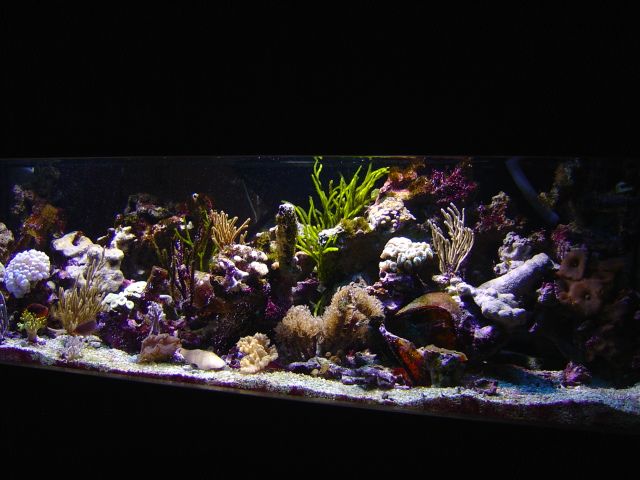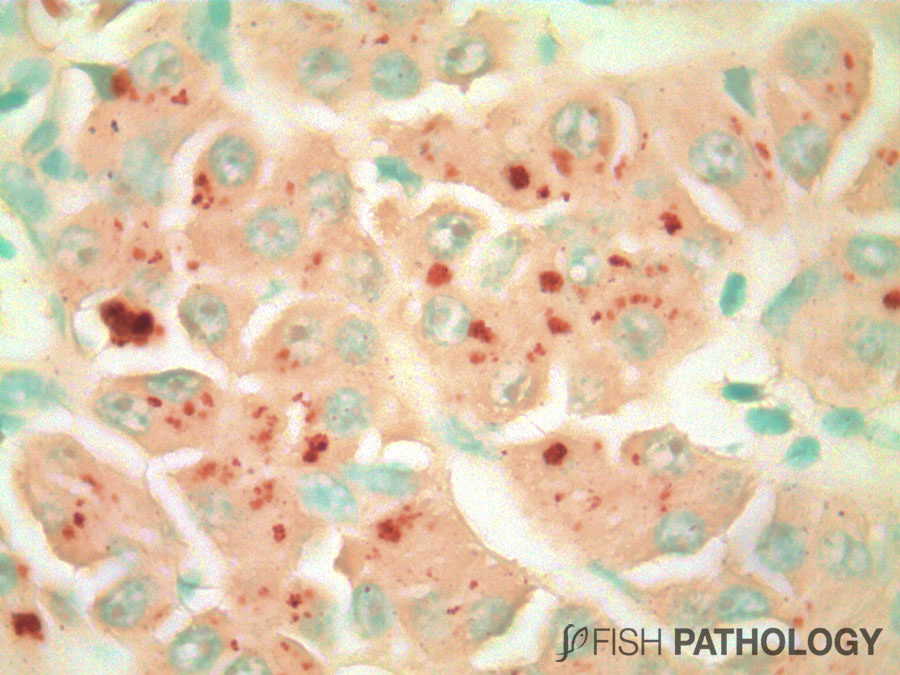Navigation
Install the app
How to install the app on iOS
Follow along with the video below to see how to install our site as a web app on your home screen.
Note: This feature may not be available in some browsers.
More options
You are using an out of date browser. It may not display this or other websites correctly.
You should upgrade or use an alternative browser.
You should upgrade or use an alternative browser.
My tank just reached 50 years old.
- Thread starter Paul B
- Start date
- Tagged users None
I’m gonna just do their specialty live rock. Basically it’s like real live rock made from south seas rock fthrown in the gulf like 50. Feet down with tunicates starfish all kinds of crazy stuff on it
Congrats! You must live somewhere where natural disasters and power outages are extremely uncommon! ><
Also, one aquarium not getting a disease for 50 years from not quarantining doesn’t alter the statistics, nor best practices. It just means your system is an outlier. Math I would call it unconscious to promote not quarantining because you happen to be an outlier. Also, it sounds like most of the fish were added decades ago, rather than, say, 50 years of continually adding fish every year. This radically alters the statistical curve of not quarantining, as well. Assuming your statements about this system are true, it’s an outlier in the fraction of a percent, and shouldn’t be used as a model for others to base their systems or husbandry on.
I would call it unconscious to promote not quarantining because you happen to be an outlier. Also, it sounds like most of the fish were added decades ago, rather than, say, 50 years of continually adding fish every year. This radically alters the statistical curve of not quarantining, as well. Assuming your statements about this system are true, it’s an outlier in the fraction of a percent, and shouldn’t be used as a model for others to base their systems or husbandry on.
Also, one aquarium not getting a disease for 50 years from not quarantining doesn’t alter the statistics, nor best practices. It just means your system is an outlier. Math
Congrats! You must live somewhere where natural disasters and power outages are extremely uncommon! ><
Also, one aquarium not getting a disease for 50 years from not quarantining doesn’t alter the statistics, nor best practices. It just means your system is an outlier. MathI would call it unconscious to promote not quarantining because you happen to be an outlier. Also, it sounds like most of the fish were added decades ago, rather than, say, 50 years of continually adding fish every year. This radically alters the statistical curve of not quarantining, as well. Assuming your statements about this system are true, it’s an outlier in the fraction of a percent, and shouldn’t be used as a model for others to base their systems or husbandry on.

- Joined
- Oct 13, 2017
- Messages
- 753
- Reaction score
- 1,257
idk when i was on long island we lost power for like 2 weeks from hurricane sandy...and many other hurricanes, noreasters,etc and a famous ny blackout...pretty sure paul's gone through those too....i lost fish during sandy but only because i was in another state at the time and didnt come home till the power came on, there was gas available, and food back in the stores...the inverts and softies survived....had i been there a generator or other means could have kept the tank warm and circulating
Last edited:
Where’s there’s 1, there’s two, where’s there’s two, there’s 4.
Like Paul, I admit I have never QT,d a fish in 40 years.
I don’t buy online, if I did, I would QT them.
Got burned once with ick 5 years ago. 1 fish in all that time.
Treated, returned, no further issues in last 5 years.
Strong, well fed fish, purchased from a known source, kept in excellent conditions with limited stress don’t get sick.
I doubt there’s are right or wrong.
Like Paul, I admit I have never QT,d a fish in 40 years.
I don’t buy online, if I did, I would QT them.
Got burned once with ick 5 years ago. 1 fish in all that time.
Treated, returned, no further issues in last 5 years.
Strong, well fed fish, purchased from a known source, kept in excellent conditions with limited stress don’t get sick.
I doubt there’s are right or wrong.
LOL, good morning Martin. I have lost fish to disease, just not communicable diseases where other fish get it. I have also added many fish. If you read my posts you will know that I added four fish 3 days ago, and 2 or 3 more a month ago. Fish jump out and die of old age and all the recent fish I added were small. (copperband, 2 filefish, 2 cardinals, 2 gobi's etc.)
Here on Long Island we experience many power outages, probably more then most places because we are on an Island and I live 90 yards from the sea. During Sandy I was out for 4 or 5 days. My tank went through all the hurricanes in the last 50 years which were quite a few. We also have ice storms and in the winter it gets down to zero degrees F.
I believe quarantining and medicating is "unconscionable" and one of the stupidest things us Geezers invented. Yes I was there when we started quarantining and medicating and was one of the proponents of it. I also saw the first liquid copper we use as before that, we used copper pennies.
(It's in my book along with the first salt water fish that spawned in a home aquarium)
As a matter of fact I was one of the first people in the US to keep a salt tank because salt fish were not available before then unless you caught them yourself which I did many times.
I can prove by my tank and three others on this very thread alone that this system of not quarantining works. (Of course, I have nothing to prove) But I doubt you can show me even one old, healthy quarantined tank where the fish are spawning and only dying of old age or jumping out. Old is not 10 or 15 years as that is only the life span of a hermit crab
But I doubt you can show me even one old, healthy quarantined tank where the fish are spawning and only dying of old age or jumping out. Old is not 10 or 15 years as that is only the life span of a hermit crab 

I don't remember when this picture was taken but it was probably way before computers were invented. I have older pictures of him someplace. That fireclown all the way on the left is still with me. He is about 30.

Here is he now with his mate, still spawning.

Here on Long Island we experience many power outages, probably more then most places because we are on an Island and I live 90 yards from the sea. During Sandy I was out for 4 or 5 days. My tank went through all the hurricanes in the last 50 years which were quite a few. We also have ice storms and in the winter it gets down to zero degrees F.
I believe quarantining and medicating is "unconscionable" and one of the stupidest things us Geezers invented. Yes I was there when we started quarantining and medicating and was one of the proponents of it. I also saw the first liquid copper we use as before that, we used copper pennies.
(It's in my book along with the first salt water fish that spawned in a home aquarium)
As a matter of fact I was one of the first people in the US to keep a salt tank because salt fish were not available before then unless you caught them yourself which I did many times.
I can prove by my tank and three others on this very thread alone that this system of not quarantining works. (Of course, I have nothing to prove)
Thats true, If I wanted to prove anything for some reason, I can'tAssuming your statements about this system are true,
I don't remember when this picture was taken but it was probably way before computers were invented. I have older pictures of him someplace. That fireclown all the way on the left is still with me. He is about 30.

Here is he now with his mate, still spawning.

Last edited:
Hi Paul B.
Amazing to see that you have had this tank for so long and it thrives and look amazing.
I have no desire to reach that many years on my tank. But that is mainly because I want a bigger tank at a time. Just got a Reefer 425XL, and would like a 900+Liters if my future house can fit it
But wow.! And you have been through an amazing time with lots of new stuff, new options, new techniques new ways of thinking a Coral reef in a controlled environment.. What a rollercoaster I guess.
Thumbs up !
Amazing to see that you have had this tank for so long and it thrives and look amazing.
I have no desire to reach that many years on my tank. But that is mainly because I want a bigger tank at a time. Just got a Reefer 425XL, and would like a 900+Liters if my future house can fit it
But wow.! And you have been through an amazing time with lots of new stuff, new options, new techniques new ways of thinking a Coral reef in a controlled environment.. What a rollercoaster I guess.
Thumbs up !
@Holts Actually Paul's ways and that of a few more of us arent new as such at all its just that many of those "who know better"or have meds etc to sell ignore or poo poo his tried tested and successful methods. I have been doing something similar to Paul for the best part of 40 year and have friends in the hobby who also use similar methods. Like Paul we are often ridiculed and told we are wrong and putting our tank and inhabitants at risk. However, we are still waiting for those to come true.
- Joined
- Apr 3, 2017
- Messages
- 2,470
- Reaction score
- 3,396
From alot of your threads, it seems like you regularly have issues with your system. We all go through ups and downs in this hobby. It just seems to me from following his and others who use similar methods, that Paul B and others with similar methods go through alot less issues. Since I've started following alot of their advice, I seem to have alot less problems with disease than I used to when I first started. It seems to be working for me so far. I feel that before bashing a method, you should at least try it first. Saying it doesn't work without ever trying it is counter productive in the advancement of the hobby!Congrats! You must live somewhere where natural disasters and power outages are extremely uncommon! ><
Also, one aquarium not getting a disease for 50 years from not quarantining doesn’t alter the statistics, nor best practices. It just means your system is an outlier. MathI would call it unconscious to promote not quarantining because you happen to be an outlier. Also, it sounds like most of the fish were added decades ago, rather than, say, 50 years of continually adding fish every year. This radically alters the statistical curve of not quarantining, as well. Assuming your statements about this system are true, it’s an outlier in the fraction of a percent, and shouldn’t be used as a model for others to base their systems or husbandry on.
It is amazing that people fault me for not medicating or quarantining when they have no problem poisoning their fish. How many people use copper just in case their fish may get sick?
Copper is a poison and not just a temporary one like many aquarists think it is. It is just as dangerous or even more so than mercury and yet it is used by almost everyone, but not the people with the very old healthy tanks.I wonder why.
How many old copper treated fish are there? Would you dose your child with mercury just in case he may get sick?
Copper in fish is deadly. just Google copper toxicity in fish if you are not afraid.
"The most toxic form of copper is the cupric ion (Cu2+). Fish and crustacea are 10 to 100 times more sensitive to the toxicity of copper than mammals. " I didn't make that up, keep reading)
And yet it is the most prescribed "medication" which it is not, it is a heavy metal.
Here is a link about the toxicity of copper in fish. If you don't care about the future health of your fish, keep using it.

Copper toxicity in fish - Fish Pathology
Copper is a significant trace element necessary for the normal growth and metabolism of living organisms. However, if there is overexposure, it can be toxic.
MULTISYSTEM
Copper Toxicity In Fish
SEPTEMBER 4, 2020 By Carlos SandovalCopper is a significant trace element necessary for the normal growth and metabolism of living organisms. However, if there is overexposure, it can be toxic.
Levels of dissolved copper are often increased from anthropogenic origins such as mine washings and direct applications of algicides, molluscicides or antifouling agents.
The most toxic form of copper is the cupric ion (Cu2+). Fish and crustacea are 10 to 100 times more sensitive to the toxicity of copper than mammals. For salmonids, the upper recommended limit is < 0.03 mg/l in hard water (>100 mg/l CaCO3) while in soft water it is <0.0006 mg/l.
In common with many other waterborne pollutants, and in particular with other heavy metals, the primary target of the toxic actions of copper on fish is their gills. High copper concentrations result in rapid mortality, partly a consequence of hypoxaemia, likely due in part to histopathological changes such as cell swelling and thickening of lamellae, congestion, telangiectasia, epithelial detachment, lamellar synechiae and even fusion of lamellae. These changes lead to an overall reduction in gill surface area and impaired laminar water flow, which have the saving effect of reducing exposure to the pollutant. Unfortunately, this very same response impairs oxygen uptake and carbon dioxide excretion, which leads in turn to an increase in PCO2 and acidosis (increased blood lactate). Instead of hypoxaemia, however, mortality likely results from ionoregulatory disturbances that induce elevated blood pressure, leading to cardiovascular collapse.
The following is copper toxicity in humans:
ABSTRACT
Copper is a trace element present in all tissues and is required for cellular respiration, peptide amidation, neurotransmitter biosynthesis, pigment formation, and connective tissue strength. Copper is a cofactor for numerous enzymes and plays an important role in central nervous system development; low concentrations of copper may result in incomplete development, whereas excess copper maybe injurious. Copper may be involved in free radical production, via the Haber-Weiss reaction, that results in mitochondrial damage, DNA breakage, and neuronal injury. Evidence of abnormal copper transport and aberrant copper-protein interactions in numerous human neurological disorders supports the critical importance of this trace metal for proper neurodevelopment and neurological function. The biochemical phenotypes of human disorders that involve copper homeostasis suggest possible biomarkers of copper status that may be applicable to general populations.Is Excess Copper The Hidden Cause Of Your Health Problems?
By Michael Biamonte, C.C.N.Copper is an essential nutrient. Without enough copper you can develop malignancies, bacterial infections, arthritis, heart diseases, neurological disorders, anemia and other disorders. Clearly having low levels of copper can cause health problems. However, excess copper (meaning an overload which is toxic to the body) is common and can causes a variety of symptoms and maladies. Most doctors are unaware that copper toxicity is a widespread problem in the U.S. The human body contains about 80 mg of copper. Daily intake from foods is usually 3-5 mgs. If the metabolism is fast copper is used up quickly and may become deficient. If the metabolism is slow then copper will not be used quickly and it will accumulate in the tissues. Copper water pipes can lead to copper toxicity. The appearance of bluish green discoloration on the drain or porcelain plumbing fixtures is a sign of excess copper in the water. Copper sprays are also used by farmers to prevent fungus and algae growth and produce. Copper is stored in the liver and is a principle constituent of bile. If constipation occurs, bile will not be excreted in the correct amounts. This causes copper build up in the liver. Copper can also invade other tissues and organs. It can build up in the brain as well. Excess copper can even be deposited in the eyes causing a copper ring to form in the cornea. This happens in extreme cases or in “Wilson’s Disease”. Wilson’s is a genetic defect. Copper accumulates as the metabolism slows down. If the energy producing glands, the adrenal and thyroid gland, slow down copper will build up. However, copper also slows down these glands. A women can also transfer excess copper to her fetus while it is developing in the womb. In this case the baby will be born with excess copper and may be prone toward bowel problems, allergies, asthma and skin problems. Mercury fillings have been given a lot of attention over the last few years. Many doctors feel that the mercury contained in the fillings can leak into the body and cause a host of medical problems. “Mercury fillings” also contain high amounts of copper! Dr David Watts, the director of research at Trace Minerals Inc., feels that copper is equally or more dangerous then mercury.
Wilson's disease
From Wikipedia, the free encyclopediaWilson's disease is a genetic disorder in which excess copper builds up in the body. Symptoms are typically related to the brain and liver. Liver-related symptoms include vomiting, weakness, fluid build up in the abdomen, swelling of the legs, yellowish skin and itchiness. Brain-related symptoms include tremors, muscle stiffness, trouble speaking, personality changes, anxiety, and psychosis.[1]
I am having trouble getting the correct foods for my fish. My Janss Pipefish only eats frozen mysis and the ones for sale now are tiny so he isn't to interested. He is still fine and way past his normal lifespan but I used to be able to get larger mysis.
My copperband and long nose also love mysis but the ones I can get now are to small for the fish to bother with. They used to be bigger. What happened.
I am also having trouble getting the right LRS food I used to get. Maybe because of Covid.
My whiteworm culture is having some issues and my worms don't like bread and yogurt any more.
I don't believe it, picky worms. My culture is many years old and maybe they evolved to only eat linguine and clams or meat loaf so I may have to start a new culture as worms are key to success. In my opinion with my system of course. Not every successful tank uses worms.
As soon as I get time, (very busy now) I will get some large clams to feed.
My fish have been scratching Human slurs about me on the inside glass. ;Meh

My copperband and long nose also love mysis but the ones I can get now are to small for the fish to bother with. They used to be bigger. What happened.
I am also having trouble getting the right LRS food I used to get. Maybe because of Covid.
My whiteworm culture is having some issues and my worms don't like bread and yogurt any more.
I don't believe it, picky worms. My culture is many years old and maybe they evolved to only eat linguine and clams or meat loaf so I may have to start a new culture as worms are key to success. In my opinion with my system of course. Not every successful tank uses worms.
As soon as I get time, (very busy now) I will get some large clams to feed.
My fish have been scratching Human slurs about me on the inside glass. ;Meh
I think you should culture the worms and sell them, so I can buy themI am having trouble getting the correct foods for my fish. My Janss Pipefish only eats frozen mysis and the ones for sale now are tiny so he isn't to interested. He is still fine and way past his normal lifespan but I used to be able to get larger mysis.
My copperband and long nose also love mysis but the ones I can get now are to small for the fish to bother with. They used to be bigger. What happened.
I am also having trouble getting the right LRS food I used to get. Maybe because of Covid.
My whiteworm culture is having some issues and my worms don't like bread and yogurt any more.
I don't believe it, picky worms. My culture is many years old and maybe they evolved to only eat linguine and clams or meat loaf so I may have to start a new culture as worms are key to success. In my opinion with my system of course. Not every successful tank uses worms.
As soon as I get time, (very busy now) I will get some large clams to feed.
My fish have been scratching Human slurs about me on the inside glass. ;Meh

Paul should just sell bottled SW and seeded rock from his system that way we can spread the love!I think you should culture the worms and sell them, so I can buy them
. . .My fish have been scratching Human slurs about me on the inside glass. ;Meh . . .
But that's not anything new is it? Or hare they refining their graffiti to avoid any obvious gaslighting?
I've had great success with aquabid live food vendors if you need to restart your culture!
Similar threads
- Replies
- 13
- Views
- 149
- Replies
- 1
- Views
- 66


















